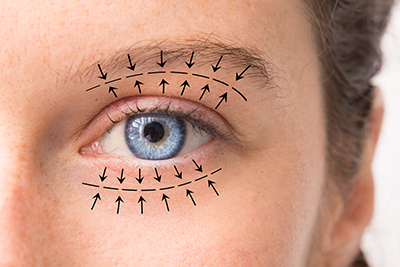Eye bag surgery is the process of removal of eye bags affecting facial appearance or vision. If you are planning to get this treatment, it is essential to know how does it work. Read this article to learn about the steps involved, recovery and potential side effects.
What is Blepharoplasty?
As people age, the muscles around the eyes become weakened. As a result, an excess amount of fat gets collected above or below the eyes, causing sagging and drooping bags under the eyes. Besides ageing, eye genetics also play role in causing this condition. Most people are born with larger eye bags. Blepharoplasty, also known as eye bag surgery, is an invasive procedure that repairs under-eye bags by removing excess skin, fats and muscles. Eye bag surgery offers a more refreshed and tight appearance to the skin. The purpose of performing this surgery is either personal choice or medical problems. Eye bags often affect the way a person feels about their appearance. However, more people can affect the vision.
How To Prepare For Eye Bag Surgery?
Before considering eye bag surgery, it is important to find an experienced and well-trained surgeon. Then you are required to provide your doctor with every single detail so they can find the better method that suits you. Your doctor may suggest you give up smoking or refrain from doing so for at least a few weeks before surgery. Before the procedure, it is important to talk to your surgeon and follow the instructions about medications and supplements you may be consuming. Several medications may put you at risk. Therefore, let your doctor about your history, routine and goals. Your surgeon may show you before and after pictures to give you an idea about potential results. It may help you discuss realistic expectations with your doctor.
There are several steps you must follow before the procedure. These include:
- Stop smoking
- Avoid medications
- Avoid using anti-inflammatory drugs
- Arrange a help to drive you home after the procedure
What Is The Procedure Involved In Blepharoplasty?
The goal of eye bag surgery is to treat the excess fat and muscles under the eyes, which causes eye bags. The stages involved in the process of eye bag surgery are:
Anaesthesia
Anaesthesia is given while carrying out an eye bag surgery. Depending on your condition, your surgeon may suggest local or general anaesthesia. You can discuss this step during the consultation visit.
Incision
The surgeon will usually perform an incision or cut to remove the excess tissues, muscles or fats under the skin. The incision is performed below the lower eyelashes or inside the lower eyelid, depending on your requirement. The surgeon will then remove the excess fat inside the skin.
Stitching
After the removal of excess fat or tissues, the incision will get closed with stitches. These stitches need to get removed after a week of the surgery. The number of stitches depends on the type of incision performed.
Recovery
The results of the eye bag surgery will become visible after a while. You might notice scars, bruising or swelling after the procedure, which will go away in two weeks maximum.
Eye bag surgery does not take too long and your doctor might discharge you on the same day. You will be provided with a detailed list of precautions, recovery instructions and medications. These instructions will help you know how you can look after yourself after the procedure.
What Can You Expect After The Procedure?
After the performance of eye bag surgery, the patient will usually experience swelling, brushing, discomfort and irritation for a while. They may also include uncomfortable and dry eyes. However, these signs last for around 2 weeks and will go away after following proper care instructions and medications provided by the surgeon. Your healthcare team will prescribe lotions, medications, cold compresses that help ease these effects. Patients may also be advised by the surgeon to wear tinted glasses to avoid direct sun exposure. If your procedure involves stitches, they will need to be removed around 5 days after the procedure.
What Are The Possible Side Effects?
Eye bag surgery is a surgical procedure that can carry several possible risks. The side effects you might experience include:
- Eye dryness
- Sun sensitivity
- Infection
- Bruising
- Bleeding
- Itching
- Difficulty opening/closing eyes
- Anaesthetic risks
- Scarring
- Problem in vision
- Temporary or permanent pain
- Blindness
Conclusion
Eye bag surgery is performed to change the appearance of the saggy and drooping undereye skin. It is a surgical procedure that involves the removal of excess skin or muscles. Now that you know all the steps, recovery, and side effects involved in the procedure, it would be easy for you to undergo this procedure.
